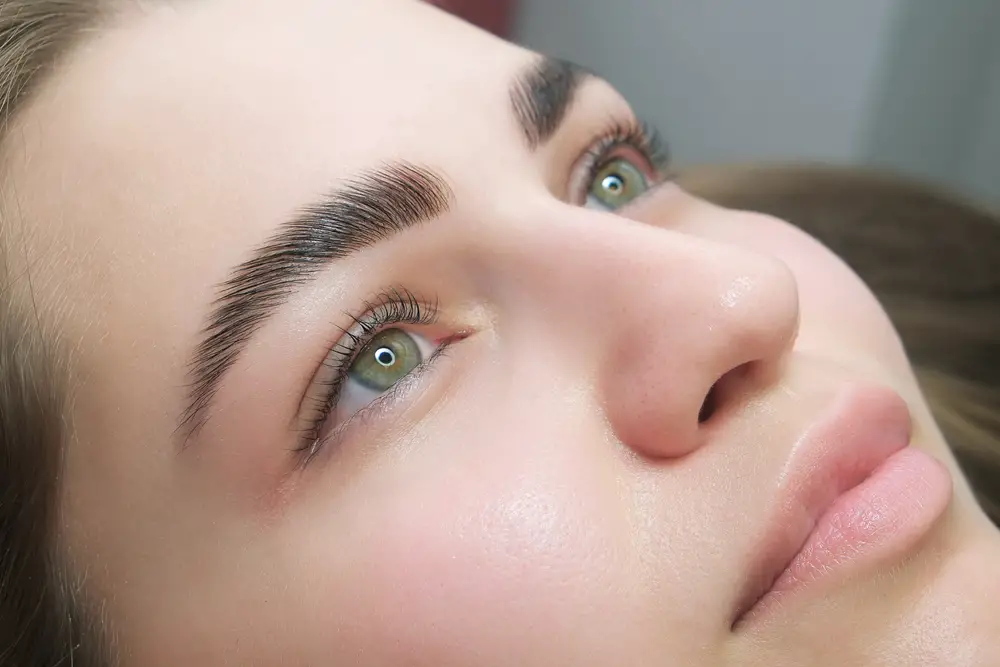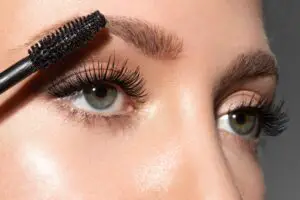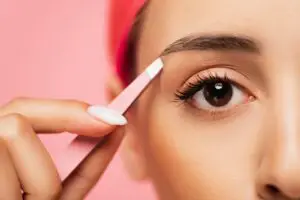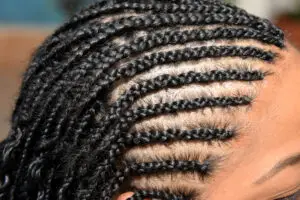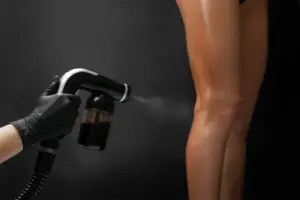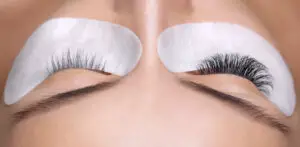Brow lamination and microblading are two popular treatments for individuals seeking fuller, well-groomed eyebrows. Each procedure has its unique benefits and drawbacks, making the choice between them dependent on individual preferences, goals, and desired results.
Microblading involves the use of a semi-permanent tattoo technique to create the appearance of fuller brows, with results lasting up to two years. On the other hand, brow lamination is a temporary treatment that straightens and lifts the natural brow hairs, giving the eyebrows a fuller and fluffier look. This treatment typically lasts between six to eight weeks.
The differences come into play with the duration of the results, the techniques used, and the overall cost of each treatment. While microblading is more permanent, it is also more expensive than brow lamination. Understanding these key factors as well as personal preferences and desired outcomes will help individuals make an informed decision when considering brow lamination or microblading for their eyebrows.
Brow Lamination
What is Brow Lamination?
Brow lamination is a non-invasive, semi-permanent treatment that aims to give the appearance of fuller, fluffier, and perfectly groomed eyebrows. This technique has gained popularity on social media platforms like Instagram, where bold and styled brows are highly sought after. Brow lamination works by using a chemical solution to manipulate the direction and shape of the brow hairs, creating a more polished look without the need for daily brow gel or other makeup products.
Process and Procedure
The brow lamination process typically consists of three main steps: applying a perming solution, a neutralizing solution, and a keratin treatment. Each of these steps plays a crucial role in shaping, setting, and nourishing the brow hairs.
- Perming Solution: The first step involves applying a chemical solution to the brow hairs. This perming solution helps break down the bonds within the hair, allowing them to be more easily manipulated into the desired direction and shape. The solution is typically applied using a spoolie, which helps to evenly distribute the product and ensure that each hair is coated.
- Neutralizing Solution: After the perming solution has had time to process, a neutralizing solution is applied to the brows. This helps to restore the hair bonds and set the new shape in place, ensuring that the brow hairs remain full and fluffy for an extended period.
- Keratin Treatment: Finally, a keratin treatment is applied to the brows. This nourishing treatment helps to strengthen and protect the hair, leaving it looking shiny and healthy. The keratin treatment also aids in maintaining the newly shaped brows, helping them to stay in place longer.
Brow lamination typically lasts between 6 and 8 weeks, making it a great option for those who want a fuller, more polished brow appearance without the commitment or downtime associated with more invasive options like microblading.
Microblading
What is Microblading?
Microblading is a semi-permanent cosmetic procedure that enhances the shape and appearance of eyebrows. This technique involves creating hair-like strokes on the skin using pigment and a handheld tool. The result is a natural-looking, feathered effect that can last for up to 18-30 months.
Technique and Tools
Microblading is an invasive procedure in which a skilled technician carefully creates tiny cuts in the skin following the natural shape of the patient’s eyebrows. Using a handheld tool with a row of fine needles, they apply a small amount of pigment into these cuts. Unlike traditional tattoo ink, the pigment used for microblading is specifically designed to fade over time, providing a more semi-permanent result.
The process may be considered painful for some, as needles are used to create the hair-like strokes. However, a numbing cream is typically applied to the skin before the procedure to minimise discomfort. The technician must also take care to avoid causing unnecessary harm to the skin, as excessive cutting can lead to scarring.
Overall, microblading offers a confident and knowledgeable alternative to other eyebrow-enhancing techniques. By applying the pigment with a clear, precise method, the final result appears natural and can last for a significant length of time.
Comparison of Brow Lamination and Microblading
Results
Brow lamination aims to provide a thicker, fuller appearance to eyebrows by straightening and taming unruly brow hairs. This treatment results in a polished, uniform look that resembles the trendy “soap brows” style. On the other hand, microblading is a semi-permanent procedure that involves using a tiny blade to create hair-like strokes, mimicking the appearance of real brow hairs. Microblading offers a more natural look, perfectly feathered and shaped to enhance the individual’s facial features.
Pain and Discomfort
In terms of pain and discomfort, brow lamination is generally considered a less invasive option. The process involves applying a perming solution and a neutralizing solution onto the eyebrows to stiffen and shape the hairs. Microblading, however, may cause discomfort for some, as it involves the use of needles to deposit pigment into the skin. Those with sensitive skin or allergies may experience redness or irritation. A numbing cream is often applied before the microblading procedure to help alleviate pain.
Duration and Longevity
Brow lamination is a temporary treatment, with results lasting between 6 and 8 weeks, depending on the individual’s eyebrow hair growth and aftercare. This treatment may be more suitable for those who prefer short-term results or wish to experiment with different eyebrow styles.
Microblading, being a semi-permanent procedure, provides longer-lasting results, typically up to 2 years. However, touch-ups and maintenance may be required to maintain the desired look, especially for those with oily skin or sun exposure, which can cause the pigment to fade faster.
Cost
The cost of these treatments varies depending on location and the expertise of the professional performing the procedure. Generally, microblading tends to be more expensive than brow lamination due to its semi-permanent nature and the precision required. Brow lamination, being a more affordable option, could be a better choice for those who desire thicker brows but are not ready to commit to a more expensive, long-lasting procedure.
Remember that it is essential to consider potential risks, including infections or unsatisfactory results, before deciding on the right treatment. Always conduct a patch test to determine any allergies and consult an experienced professional to ensure the best outcome for your eyebrows.
Benefits and Side Effects
Brow Lamination Benefits and Side Effects
Brow lamination is a non-invasive treatment that helps create a fuller, more uniform eyebrow appearance using a chemical solution to shape and thicken the brows. This procedure is suitable for those wanting a natural look without the need for pencils or gels, and can be a great alternative to threading and waxing.
There are several benefits related to brow lamination:
- It is less invasive compared to microblading
- Offers a temporary solution for fuller brows, lasting up to eight weeks
- Can be done alongside other treatments, such as tinting
However, there are some potential side effects and risks associated with brow lamination:
- It may cause redness, dryness, or irritation, especially in people with sensitive skin or those prone to eczema and psoriasis
- The chemicals used in the treatment might cause an allergic reaction, making a patch test necessary
- Improper aftercare, including exposure to harsh cleansing products, may decrease the results’ longevity
Microblading Benefits and Side Effects
Microblading, on the other hand, is an invasive procedure where a brow artist uses tiny needles to create semi-permanent eyebrow strokes. It is more suitable for those looking for long-lasting results and a well-defined brow shape.
Some advantages of microblading include:
- The results can last up to two years, depending on factors such as skin type and sun exposure.
- It offers a natural look as the brow artist uses a technique called microfeathering to mimic your existing hair strokes.
However, there are some drawbacks and risks associated with microblading:
- The procedure can be painful, especially as it involves needles and a more invasive process.
- Costs are generally higher compared to brow lamination.
- There is a risk of infection, as the procedure breaks the skin.
- Results may fade faster for people with oily skin, necessitating more frequent touch-ups.
In conclusion, brow lamination and microblading are two different treatments, each with their own benefits and side effects. It is important to consider factors such as your desired results, pain tolerance, and budget when deciding which treatment to choose.
Additional Information and Tips
Selecting a Brow Specialist
Choosing the right brow specialist is crucial to ensure a successful brow lamination or microblading procedure. Look for a professional with a solid reputation, certified training, and a portfolio of their work. It is essential to find someone experienced in the procedure you desire, as their expertise will impact the final results.
Preparation and Aftercare
Brow Lamination
Before undergoing brow lamination, it is crucial to prepare the eye area by cleansing it thoroughly and avoiding the use of retinol or other harsh products for a few days.
The brow lamination procedure uses a chemical solution and neutralizer to shape and set your eyebrows in the desired direction. The treatment is largely painless and takes around 30 minutes to complete.
Aftercare is essential for long-lasting results. For the first 24 hours, avoid getting the brows wet or applying makeup. Refrain from sun exposure, saunas, and steam rooms for about 48 hours. For approximately one week, use a gentle cleanser and avoid harsh facial products like retinol.
Microblading
Microblading is a semi-permanent tattoo procedure that uses a special pigment to create fuller and more defined eyebrows. It is particularly suitable for those with thin eyebrows or desire increased density. Ensure normal to dry skin around the eye area, as oily skin can affect pigment retention.
Before the treatment, avoid tweezing or waxing the eyebrows for at least one week. Consult with a dermatologist if using retinol or strong skincare products.
Microblading typically lasts up to two years and may require occasional touch-ups. The procedure includes numbing the eyebrow region, which reduces discomfort. Be prepared for slight swelling and redness post-treatment.
After the treatment, follow specific aftercare instructions, such as keeping the area clean and dry for at least 24 hours and avoiding touching or picking at the brows. Limit sun exposure and use sunscreen with SPF 30 or higher for proper protection when outdoors.
Proper aftercare assists in avoiding infections and ensures a smooth healing process for both procedures. By selecting a highly skilled brow specialist and adequately preparing for and adhering to aftercare instructions, you can achieve stunning, long-lasting results for your eyebrows.
Frequently Asked Questions
Which one lasts longer, brow lamination or microblading?
Microblading is a semi-permanent treatment that can last up to 2 years, while brow lamination is temporary, with results lasting between 6 and 8 weeks.
Can I combine brow lamination and microblading?
Yes, brow lamination and microblading can be combined. Brow lamination can enhance the appearance of a healed microbladed brow, providing impressive results.
What are the key differences between brow lamination and microblading?
Microblading involves creating temporary tattoo-like strokes on the brows, while brow lamination is a brow straightening treatment. Microblading is semi-permanent, whereas brow lamination is temporary.
Which technique is more suitable for sensitive skin?
Brow lamination may be more suitable for individuals with sensitive skin, as it is less invasive than microblading. Microblading involves tattooing the eyebrow area, which may cause more irritation for those with sensitive skin. Always consult with a professional before deciding on a brow treatment.
Is there an ideal candidate for brow lamination or microblading?
Brow lamination is ideal for those who want to achieve a fuller, fluffier eyebrow appearance without committing to a long-lasting treatment. Microblading is more suitable for individuals who desire a semi-permanent solution to sparse or uneven brows. It is always recommended to discuss your goals and expectations with a brow professional before choosing a treatment.
How does the maintenance of brow lamination compare to microblading?
Both treatments require regular maintenance to keep your brows looking their best. Brow lamination maintenance typically involves having the treatment redone every 6 to 8 weeks, while microblading maintenance usually consists of occasional touch-ups, depending on factors such as skin type, lifestyle, and aftercare.

I’m Jennifer a beauty and wellness expert. I believe in promoting a sustainable and healthy lifestyle from within. Helping people feel good is my passion; whether it’s teaching yoga or offering skincare advice.

